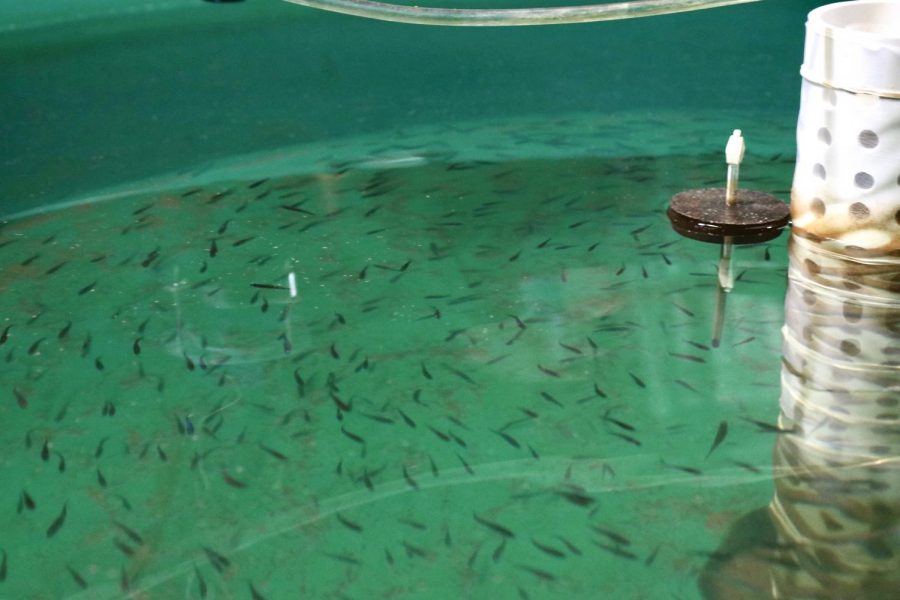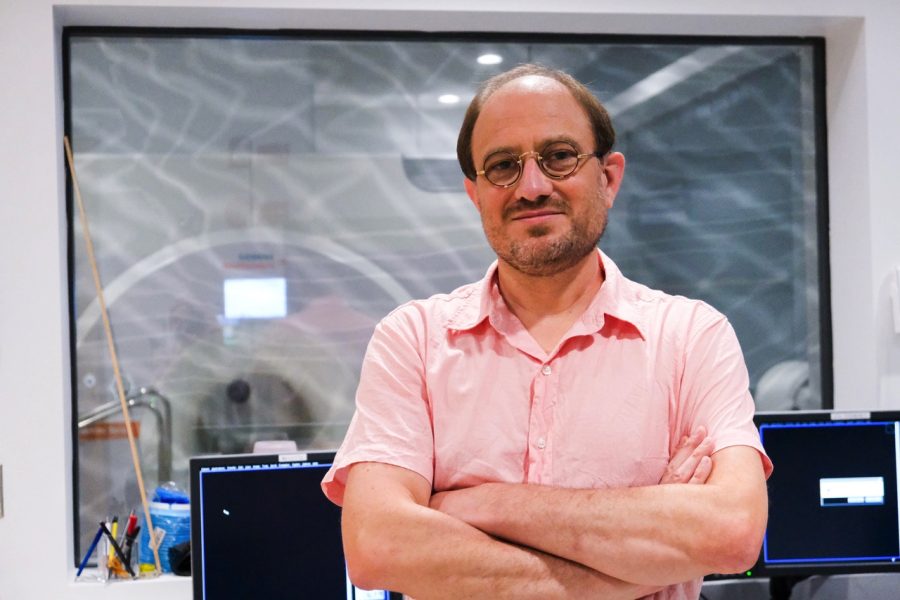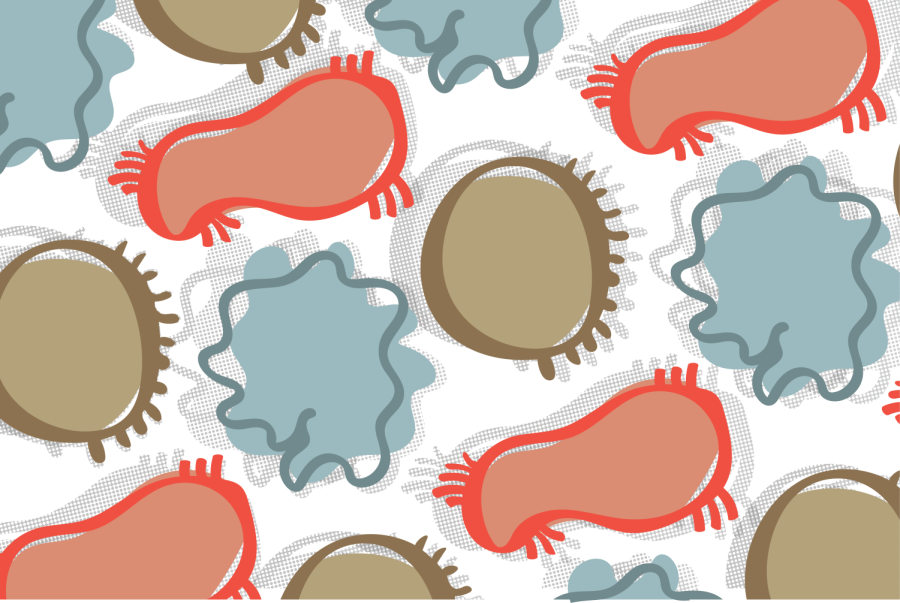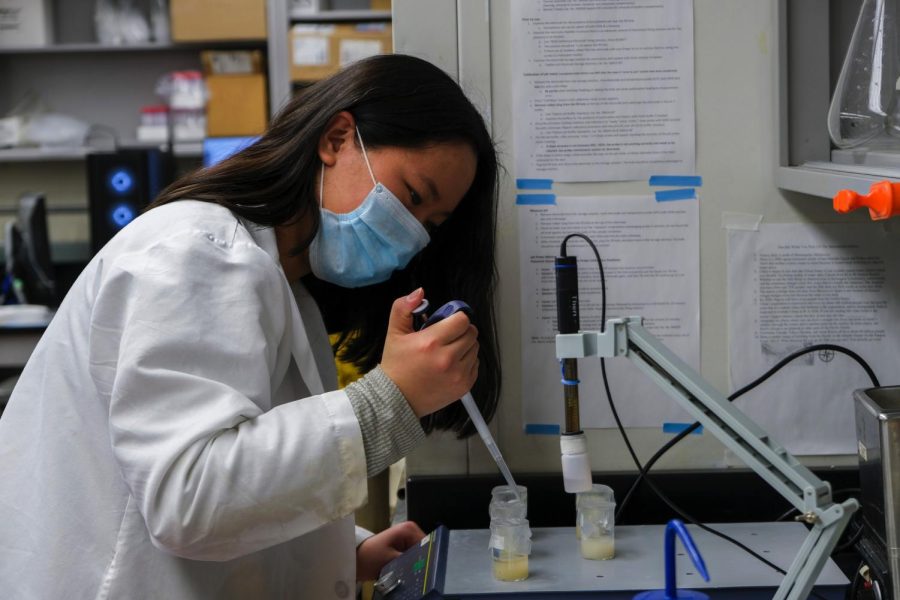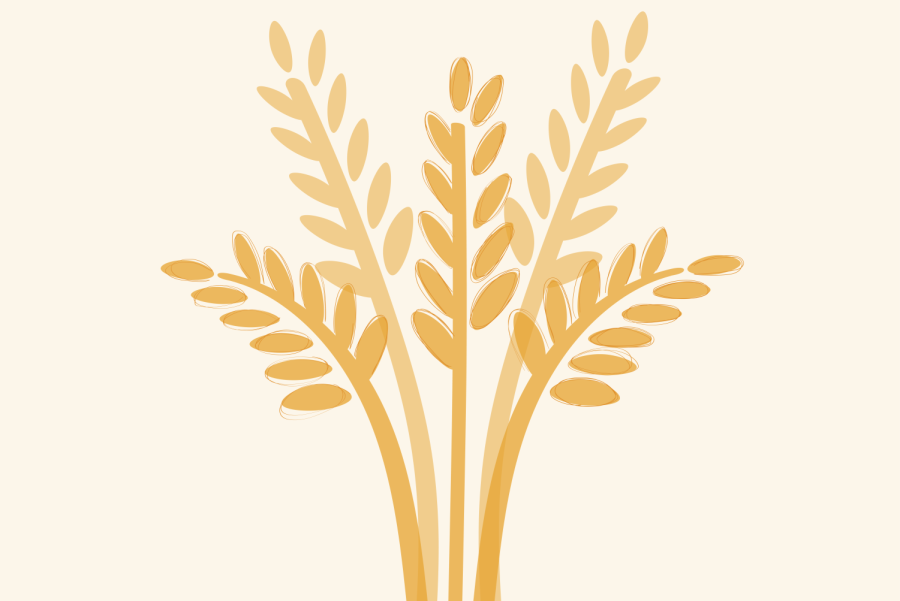Hidden in a former tractor garage on the University of Minnesota St. Paul campus, the sound of running water fills the air. In the Minnesota Aquatic Invasive Species Research Center, 20,000 tiny yellow perch swim in circles in two large, blue tubs of water, occasionally bubbling to the surface to nibble on food floating there.
Yellow perch have the potential to be one of the most promising species for fish farming in the state, an industry whose viability has not been explored until now.
A new three-year project led by the University’s Sea Grant program is looking to explore the potential of a sustainable aquaculture industry in Minnesota. Aquaculture includes breeding, rearing and harvesting fish, shellfish, algae and other aquatic organisms in a controlled environment.
Researchers say they can better support farmers interested in this field by conducting a market study that examines the profitability of fish farming, consumer interest in buying local seafood and the initial cost of starting an aquaculture business in the state.
Fish farming in Minnesota
“Aquaculture is becoming more important as capture fisheries globally are declining,” said Dr. Amy Schrank, University professor and co-lead of the project. “There’s still increasing demand by people for fish protein as a food source, but wild fisheries are not able to meet that demand.”
The U.S. imports the majority of all seafood consumed. The Great Lakes region contains over 20% of the world’s fresh water, which could give Minnesota and the Midwest the potential to be a hot spot for aquaculture, she said.
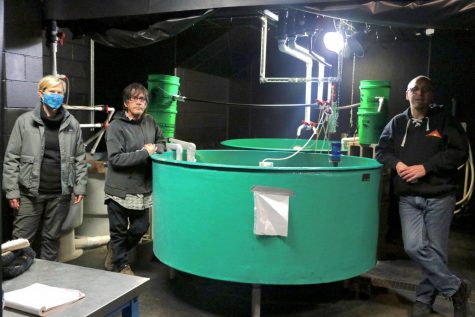
Part of the market study will be looking into if Minnesota aquaculture farmers can compete with international market prices, said Don Schreiner, a fisheries specialist and project co-lead.
The food fish industry in the state is small, he said. Minnesota has registered only 25 licensed aquaculture farmers, and most of the fish bred in the state get used as bait or to supplement the populations of fish in ponds and lakes.
Despite the fact there are few farmers actively involved with aquaculture, Schreiner said he often gets two to three inquiries a week from curious Minnesotans who are interested in aquaculture but do not know how or where to start.
Chad Hebert, a local producer of yellow perch, said Minnesota has a robust fishing industry, rich natural resources and a consumer base that has a taste for seafood, which means it has the potential to expand commercial fish farming as a business.
A fish farmer for over a decade, Hebert lost his farm in 2018 when the building housing it was torn down but has been working with the University and other organizations to explore best management practices for early life stage development of perch. Some of the barriers to the aquaculture industry are the initial costs associated with equipment, water filtration systems and an inaccessible stable market, he said.
Because the information on these barriers does not exist, it is almost impossible for farmers to secure a loan for their businesses, Schreiner said.
Knowing this information could help farmers in the future. And if it is proven that the food fish business is not viable in Minnesota, that could dissuade people from investing in a business that is not sustainable.
“We may find that, based on what the consumers tell us and what it costs to raise fish, that Minnesota cannot be competitive and people aren’t willing to pay a premium if that’s what it takes to keep it competitive,” he said. “And maybe we let somebody else raise fish and we just purchase it, but at least people won’t be putting their life savings into businesses that have a really good chance to fail.”
Correction: A previous version of this article misstated the total number of yellow perch located in the Minnesota Aquatic Invasive Species Research Center; the correct amount is 20,000.










